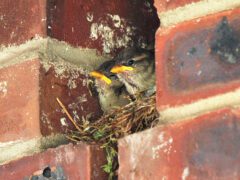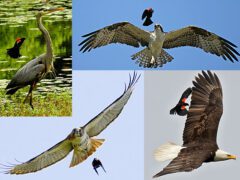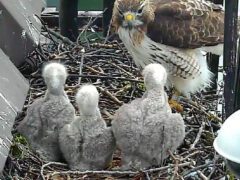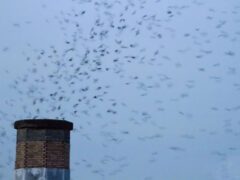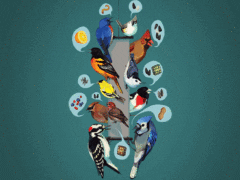Painted Bunting Similar Species Comparison
Main SpeciesPainted Bunting
Adult male
Stocky, finchlike bird with a stubby, thick, seed-eating bill. Adult males are unmistakable with their brilliant blue head, green back, red rump and red belly.
© David Hollie / Macaulay LibraryLouisiana, May 25, 2014Female/immature male
Females and immatures are a uniform, bright yellow-green overall, with a pale eyering.
© Lloyd Davis / Macaulay LibraryFloridaAdult male
Males sing a sweet musical jumble when attracting mates or defending territories.
© Dave Rintoul / Macaulay LibraryKansas, July 06, 2023Immature male
Immature male shows a highly muted version of adult male's color pattern, with hints of blue on the head and wing.
© Bryan Calk / Macaulay LibraryTexas, May 11, 2020Female/immature male
Stocky bird with a finchlike conical bill. Females/immatures are yellow-green overall, with a pale eyering. Oftentimes appears dull overall, but in general appears greener than similar species.
© Shawn Billerman / Macaulay LibraryOklahoma, August 02, 2015Adult male
Feeds on seeds for the majority of the year, but eats more insects during the breeding season.
© Larry Arbanas / Macaulay LibraryTexas, April 23, 2008Adult male
Males are stunningly colored with blue heads, red underparts, and green backs. Forages on the ground most often in dense cover, among grasses, or at seed feeders.
© Seth Honig / Macaulay LibraryMaryland, January 02, 2021Adult male
Breeds in dense brush, often adjacent to thick, grassy areas or woodland edges.
© Joshua Emm / Macaulay LibraryMaryland, April 03, 2017Female/immature with House Finch
Both local and vagrant Painted Buntings often seek out bird feeders as an easy source of food.
© Larry Arbanas / Macaulay LibraryTexas, April 23, 2008Female/immature
Usually occupies riparian thickets, shrubby areas, and open woodlands throughout the year.
© Larry Arbanas / Macaulay LibraryTexasSimilar SpeciesVaried Bunting
Female
Female Varied Buntings are browner overall than female Painted Buntings, which are more yellow-green.
© David Hollie / Macaulay LibraryArizona, June 04, 2015Similar SpeciesIndigo Bunting
Female/immature
Female/immature Indigo Buntings are browner overall and have wingbars, whereas female Painted Buntings are more yellow-green and lack wingbars.
© Dan Vickers / Macaulay LibraryGeorgia, October 02, 2016Similar SpeciesLazuli Bunting
Female/immature
Female/immature Lazuli Buntings are browner overall with pale wingbars, whereas female Painted Buntings are more yellow-green and lack wingbars.
© Marlene Cashen / Macaulay LibraryWashington, August 20, 2017Similar SpeciesLesser Goldfinch
Female/immature
Female/immature Lesser Goldfinches are smaller and more compact than Painted Buntings. They have whitish wingbars, which Painted Buntings lack.
© Chris S. Wood / Macaulay LibraryArizona, February 26, 2017Compare with Similar Species
Click on an image to compare
Species in This Family
Cardinals and Allies(Order: Passeriformes, Family: Cardinalidae)
More to Read
Don't miss a thing! Join our email list
The Cornell Lab will send you updates about birds,
birding, and opportunities to help bird conservation.
















